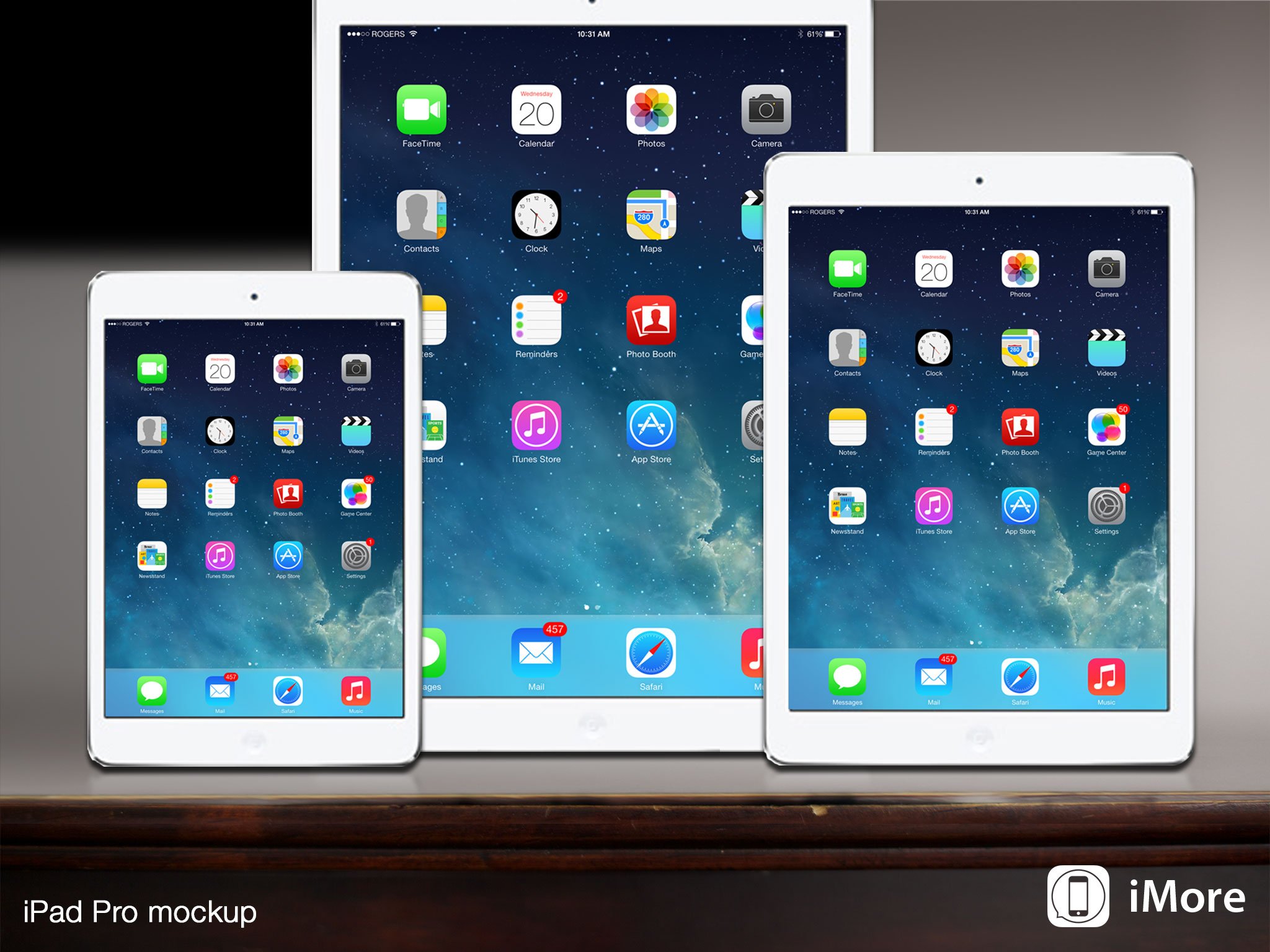Why a 5-inch iPhone 6 is far more important than a 13-inch iPad Pro

iPhone 6. 2014 has only just begun and it seems like 5-inch iPhone and 13-inch iPad Pro rumors are already getting a lot of attention and generating a lot of discussion. That both sets of rumors tend to focus around larger screen sizes is interesting, but what's really interesting is why a bigger iPhone is far more important than a bigger iPad...
Apple has been increasing the size of the iPhone screen in one way or another for years. In 2010 the iPhone 4 doubled the pixel density and gave us our first "Retina" display. In 2012 the iPhone 5 added 0.5-inches, making it widescreen.
The iPad, however, has most recently decreased in size. Sure, in 2012 Apple brought Retina to the iPad 3, but their next move wasn't to increase the physical size like they did with the iPhone, but to shrink it down into the smaller iPad mini.
Both changes — the wider iPhone 5 and smaller iPad mini — made for better mainstream products, and that's Apple's goal.
iPhone 6 and the better mainstream experience
Taking the iPhone 6 to a larger screen size, whether it's 4.3- or 5-inches or somewhere in between, would also make for a better mainstream product. The world now isn't as it was in 2007, when smartphones sucked and people had to rely on a desktops or laptops as their primary computing devices. Now we have smartphones as powerful as desktops and laptops were back then, but also far, far more accessible. There are people, both in established and in emerging markets, who need a phone, but also need it be their primary computing device. Not only don't they want to carry laptops around with them, they don't even want to carry tablets.
For these people, a bigger iPhone would be a better iPhone. Games and videos aside, it would let them do more things, more easily, than a small screen ever could. It would be more accessible to people of more ages, especially thanks to new technologies like TextKit which make dynamic font scaling a reality. It would also be more powerful for geeks who simply want to do more on their phones. As for "one handed ease of use", that's something that software can and should solve instead. iOS 7's consistent back gesture shows just exactly that.
iPhone 6 is the next Verizon-sized growth opportunity
Once upon a time people had to choose between an iPhone on AT&T or a different phone on Verizon. Many chose the iPhone, but some didn't. When the iPhone hit Verizon, however, people no longer needed to choose. They could have both.
Master your iPhone in minutes
iMore offers spot-on advice and guidance from our team of experts, with decades of Apple device experience to lean on. Learn more with iMore!
Right now people have to choose between a 4-inch iPhone or a larger phone from another manufacturer. Many still choose the 4-inch iPhone but some don't. When the iPhone goes to a larger screen size, people will no longer need to choose. They'll be able to have both.
That increases Apple's addressable market in a premium space (and removes a key differentiator for competitors), and that's what new devices are all about.

That same argument doesn't apply to a 13-inch iPad Pro. By increasing the size of the iPad display, Apple might round out the product line, but they won't make it a better mainstream product. "Pro" by definition isn't mainstream. It'll no doubt appeal to creative and productivity niches, but not to the much bigger market for whom a smaller, lighter iPad is the better option. Eventually it could get more people off ultralight laptops like the MacBook Air faster, and onto iOS, but not by the tens or hundreds of millions. It could still be a viable market, but not a big one.
That's the difference between 5-inches and 13-inches — the iPhone 6 moves the needle for Apple far, far more than the iPad Pro.

Rene Ritchie is one of the most respected Apple analysts in the business, reaching a combined audience of over 40 million readers a month. His YouTube channel, Vector, has over 90 thousand subscribers and 14 million views and his podcasts, including Debug, have been downloaded over 20 million times. He also regularly co-hosts MacBreak Weekly for the TWiT network and co-hosted CES Live! and Talk Mobile. Based in Montreal, Rene is a former director of product marketing, web developer, and graphic designer. He's authored several books and appeared on numerous television and radio segments to discuss Apple and the technology industry. When not working, he likes to cook, grapple, and spend time with his friends and family.
